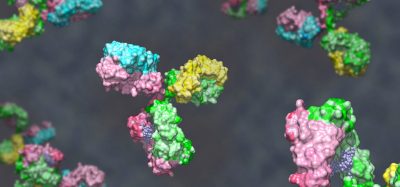Protein discovery leads to new hyperparathyroidism drug target
Posted: 30 May 2019 | Victoria Rees (Drug Target Review) | No comments yet
A new signalling protein discovery could lead to drug-based therapies to treat hyperparathyroidism.


Researchers led by Duke-NUS Medical School have discovered a protein which appears to protect parathyroid glands from overactivity, providing a new drug development target to treat hyperparathyroidism, a condition currently only treatable through surgery.
The research team have found that semaphorin3d (Sema3d), a signalling protein secreted by developing parathyroid glands, suppresses the EGFR/ERBB signalling pathway. This is responsible for parathyroid cell growth and known to mediate cancer growth and survival, so provides a new drug target.
“Not many molecules are known to inhibit parathyroid growth and there are no drugs available in the market to treat the condition,” said Assistant Professor Manvendra Singh, from the Cardiovascular and Metabolic Disorders Programme at Duke-NUS Medical School and author of the study. “Surgery is the most common treatment for hyperparathyroidism. However, reoperative surgery for persistent or recurrent hyperparathyroidism remains technically challenging due to fibrotic scarring and distorted anatomy that make it more difficult to identify abnormal parathyroid glands. Patients are also at increased risk for laryngeal nerve injury, cervical bleeding and postoperative hypocalcemia.”
The researchers believe that Sema3d’s defensive role in restricting parathyroid cell proliferation could be applicable to other tumour types as well. Further investigations could lead to the development of anti-tumour treatments using genetically engineered Sema3d or other drugs that target the protein’s downstream pathways.
The study involved used a transgenic model lacking the gene that codes for Sema3d. In this model, EGFR signalling was activated, leading to parathyroid cell proliferation and the development of primary hyperparathyroidism. Turning off EGFR signalling with a known anti-cancer drug enabled some of the parathyroid tissue to return to its regular state. The finding suggests Sema3d and drugs that can similarly inhibit EGFR signalling could be used to treat hyperparathyroidism.
The parathyroid constitutes four small glands located in the neck behind the larger thyroid, which are responsible for maintaining healthy blood calcium levels through the secretion of parathyroid hormone (PTH). Primary hyperparathyroidism is a condition in which these glands produce high levels of PTH, elevating blood calcium levels. This can lead to kidney stones, neuropsychiatric disorders and bone abnormalities.
“This discovery is a potential game-changer in the treatment of hyperparathyroidism,” said Professor Patrick Casey, Senior Vice Dean for Research at Duke-NUS. “Considering the condition is common in the elderly, possible drug-based therapeutic options in the future would reduce the burden of surgery and associated risks in these elderly patients.”
Related topics
Drug Development, Drug Targets, Protein
Related conditions
bone abnormalities, Cancer, cervical bleeding, hyperparathyroidism, Kidney stones, laryngeal nerve injury, Neuropsychiatric disorders, postoperative hypocalcemia
Related organisations
Duke-NUS Medical School
Related people
Manvendra Singh, Patrick Casey








